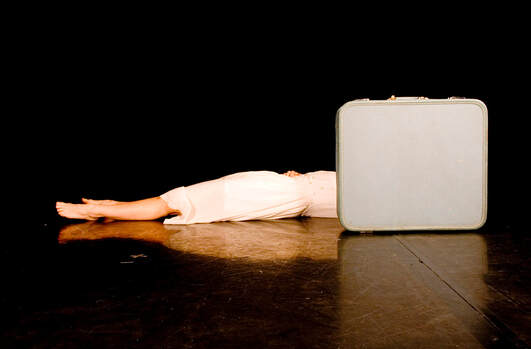|
|
Why fire and mud?
Fancying myself a Christian Apologist and a Professional Artist, I needed a personal place to create and to write about matters of faith and worldview frameworks within the arts, specifically the profoundly personal faith stirred within a dance artist who desperately wants to engage in intellectual rigor. I am actively seeking deep ways to explore this robust Christian faith through an artistic lens.
I’m committed to moving in the liminal space between catastrophic reverence for God and a quaking humility that
intentionally keeps the tremors of Grace close at hand. I'm not there yet.
Reverence is like fire that is both thrilling and terrifying. As I think of the revelation of God as something to put us in a state of awe, it can cause us tremble at His presence. This awe becomes the context in which to move through our spiritual formation as persons.
Humility is like mud coming from the scriptural imagery of repentance and making oneself low with sackcloth and ash and imagines of mixing those acts of repentance with the tears of the repentant to form a mud that becomes the soul content of the person being formed.
Both elements are active and willful postures on the journey. They serve as reminder and embodiment of things beyond oneself, pointing to the Creator who created us as persons in relationship with a Holy God.
I am realizing and recognizing that a common human dignity is key in tethering touchstones of common human experience to reality. That foundational lens is the only thing that can bridge differences for common understanding. This is vital, in my opinion, to create the kind of diverse communities that really generate and undergird the best possible human thriving and make life worth living.
Thank you for taking this journey with me.
I’m committed to moving in the liminal space between catastrophic reverence for God and a quaking humility that
intentionally keeps the tremors of Grace close at hand. I'm not there yet.
Reverence is like fire that is both thrilling and terrifying. As I think of the revelation of God as something to put us in a state of awe, it can cause us tremble at His presence. This awe becomes the context in which to move through our spiritual formation as persons.
Humility is like mud coming from the scriptural imagery of repentance and making oneself low with sackcloth and ash and imagines of mixing those acts of repentance with the tears of the repentant to form a mud that becomes the soul content of the person being formed.
Both elements are active and willful postures on the journey. They serve as reminder and embodiment of things beyond oneself, pointing to the Creator who created us as persons in relationship with a Holy God.
I am realizing and recognizing that a common human dignity is key in tethering touchstones of common human experience to reality. That foundational lens is the only thing that can bridge differences for common understanding. This is vital, in my opinion, to create the kind of diverse communities that really generate and undergird the best possible human thriving and make life worth living.
Thank you for taking this journey with me.
A Kinesthetic Approach to the Choreographic Process of Dance for CameraDANCE // MAY 2007In dance for camera work, the interplay between dance and film mediums allows choreographic and cinematic choices to shape interpretive possibilities. The process, as a collaborative dialogue between designed movement of the body and camera-in-action, clarifies the distinctive nature of dance portrayed on film, specifically in creating dance works made for film. Questions guiding the research include: What elements of the film medium change the way the body is viewed and how is that important in shaping the film’s choreographic narrative? Within the interplay between the body in designed motion and the camera-in-action, what sense-making text is created through the intent of the choreographer/filmmaker developed through the manipulation of these two considerations in the film editing process? A dancefilm is presented in conjunction with the paper as a culmination of the project to show how the choreographic process is shaped by the body’s representation onto film.
An Imaginary Dance Review on My Purpose for Creating and DancingDANCE // SEPTEMBER 5, 2005She casually philosophizes that “personal experiences shape the decisions of your life; the way you conduct yourself as well as the response you choose to have from them. Performing from the body you have means performing from those experiences. Not that you are limited by your experiences but that they simply mark the way you’ve come from. All of this informs you as a performer regardless of the decisions you ultimately make in a performance.”
|
Memes & Art Cards |








